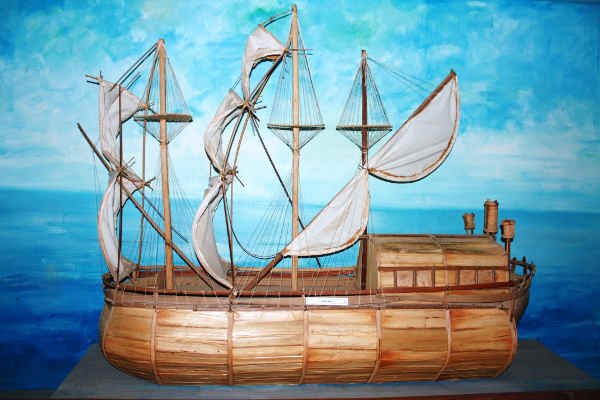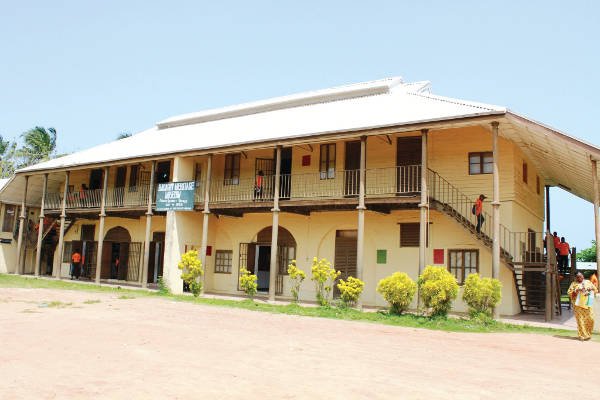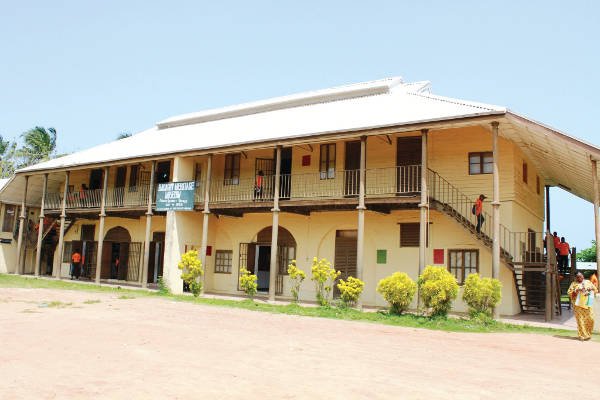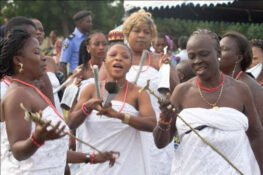History records that slave trade began in Badagry in 1473 and gained prominence between the 16th and 18th Centuries. It grew to an important commercial centre flourishing on the export of slave trade through the creeks and lagoon and across the Atlantic to Europe and America.
During that dark period, Black men and women were forcibly sold into slavery and taken from the shores of Badagry and other towns like Quidah in Republic of Benin, Goree Island in Senegal to far places to work on plantations. From 1502, no fewer than 5000 slaves were transported from the shores of Badagry annually to the present day United States of America and Caribbean Islands including the town of Bahia in Brazil and that figure rose to 11,000 in the 17th century, before the abolition of the obnoxious Slave Trade.
The Slave Museums in Badagry – Badagry Heritage Museum, Mobee Family Slave Chain Relics Museum and Seriki Faremi’s Slave Baracoon display items such as Slave Chains, Canon Guns, Slave Ship and images that depicts the era of Slave Trade and its abolition. It all helps to preserve the cultural heritage and remind visiting tourists the sufferings and struggles of the captured African men and women during the era.
One would not really understand how saddening and emotional the period until one takes a trip to one of the slave museums in Badagry. And a tour guide will explain in great details the story behind each room and object.
 THE NECK CHAIN
THE NECK CHAIN
The neck chain was used mainly when the slaves were on long journey from the hinterland to the market or to the waiting vessels at the coast. The chain was put across their necks padlocked. This was done by clasping rings connecting the chain round the neck of each of the slaves. The chain originally was about 50 metres long and had the ability to hold about a hundred slaves by the neck. The chain has been kept for 500 hundred years now.
Slaves were made to sit on themselves and when there was a sign of ill-Health such slave was unchained and thrown into the sea. It was this neck chain they carried about to the plantation and the slave master was ready to shoot and kill any slave that attempted to run away.

SLAVE DRINKING BOWL
The bowl was made of pure iron and those slaves kept for domestic work were made to fetch water into it. The wretched slaves were made to during from the bowl with their hands and legs in chains. Fifty of the slaves drank together from the bowl with their mouth and each for one minute.
 BRAZILIAN SLAVE BARACOON
BRAZILIAN SLAVE BARACOON
Located within the Seriki Abass Court, opposite the Slave Port in Badagry. Built in 1840 by the Brazilian slaves dealers and the structure was declared a national monument in 1940. The Baracoon “slave cell” is the store where slaves were kept before the arrival of the European slave slips.
There were forty cells with forty slaves in each. The slaves were kept in the Baracoon for three months before the arrival of the slave ships. Meanwhile, they were taken out in the morning for work and taken back into the cell in the evening.
 CANON GUNS
CANON GUNS
They are metal war instruments used between 17th to 19th centuries in Badagry. They were first used by the slave dealers to wage wars so as to raid and capture innocent people as slaves and each of the Canon was exchanged for 100 African slaves for the big size and 40 slaves for the smaller size. The Canon Guns were also part of the Abolition gifts presented to the Badagry chiefs by Queen of England to wage war against slave dealers.
 SLAVE SHIP
SLAVE SHIP
Slave Ships were large cargo ships specially for the purpose of transporting newly captured enslaved Africans to America and Europe.
The slaves on the Ship were crammed, selectively grouped to manage space, shackled together with different types of chains, underfed and lived like animals through their long voyage to the New World.
 BADAGRY HERITAGE MUSEUM
BADAGRY HERITAGE MUSEUM
The Badagry Heritage Museum is situated at Boekoh quarters, along Lander road in badagry.
The Badagry tour began with a visit to Badagry Heritage Museum, where you will learn about the Slave Trade history which took place in Badagry in the 15th Century.
The Heritage Museum was established to preserve and conserve the history of Badagry as it relates to the slave trade era. It was established to educate the public about the history of Trans – Atlantic Slave Trade in Nigeria. The Museum consists of nine galleries namely, Introduction, Capture, Facilitators, Equipment, Resistance and Punishment, Industry, Integration, Abolition and Badagry.





